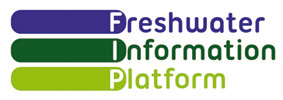What are scenarios?
The multiple combinations of drivers and pressures impacting an aquatic system are shaped by its climatic, managerial and socio-economic conditions, both historical and contemporary. The future combinations of drivers and pressures depend on the future climatic and socio-economic scenarios considered plausible for this system, created using Representative Concentration Pathways (RCPs) and the Shared Socioeconomic Pathways (SSPs) projections.
Within MARS, scenarios are used to project the impacts of multiple stressors on aquatic ecosystems. They deliver a qualitative framework and, where possible, quantitative data for modellers to run simulations.
What is the meaning of the storylines?
Various future climatic and socio-economic scenarios have been chosen within MARS to define three narrative storylines at European level. Each storyline frames the conditions leading to certain combinations of drivers and pressures for Europe. These storylines have been downscaled to case-study catchment-level using the expert knowledge of the scientists working on the MARS case study basins, and the stakeholders of these catchments.
Brief summary of the storylines
The "Techno World" or "Economy rules" frames a world driven by economic priorities. Rapid economic development increases the use of energy. Policies are not focused on the environment, but on enhancing trade and increasing economic growth. The climate is changing rapidly. This world is based on a combination of SSP 5 and RCP 8.5.
In the "Consensus World”, the economy and population are growing roughly at the same pace as now. Policies to protect the environment are continued after 2020, and the preservation of nature is regulated and encouraged by the government. This world is based on a combination of SSP 2 and RCP 4.5.
The "Fragmented World" is characterised by the unequal development of different countries. International trade agreements are largely ceased, causing each country to prioritise its own needs. The environment is protected only by rich countries at a local scale, but little attention is paid to the preservation of nature globally. This world is based on a combination of SSP 3 and RCP 8.5.
These qualitative storylines have been translated to quantitative data. Grids of 0.5 x 0.5 degrees resolution were provided for several parameters (e.g. temperature, precipitation, water abstraction, run off, flood risk areas, nitrate losses), covering Europe for the three storylines and the two time-horizons. The quantitative values used in predictive modelling were derived from existing projects and modelling tools (e.g. ISI-MIP, SCENES, CLIMSAVE).



